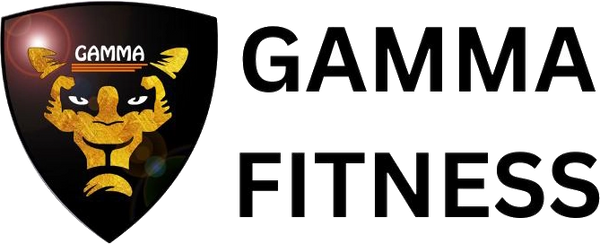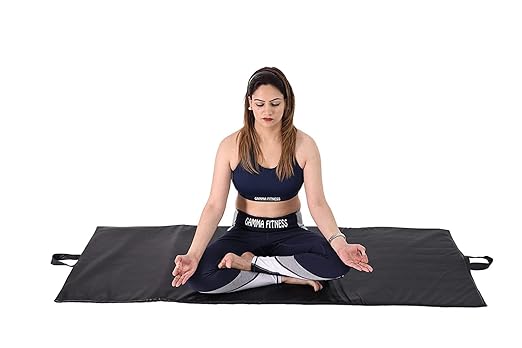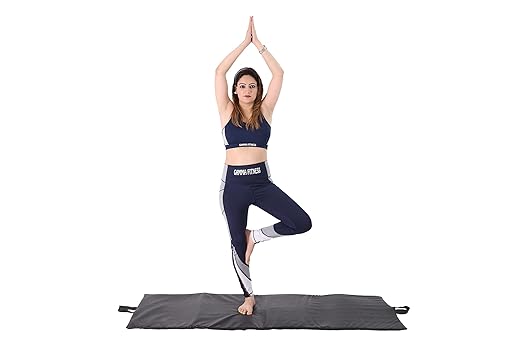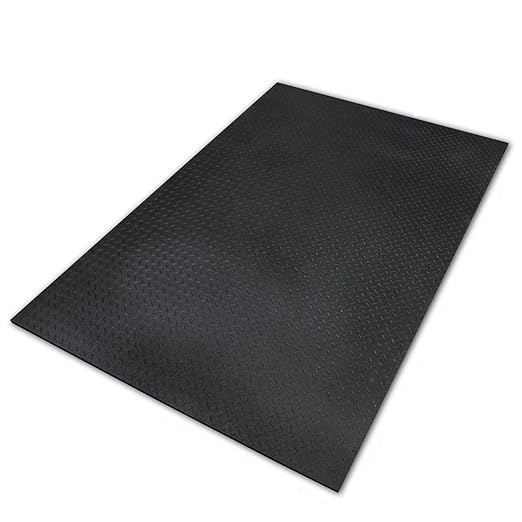-
Gamma Fitness Leather Yoga Exercise Mat for Gym, Indoor & Outdoor | Foldable Yoga Mat | Traveling Mat | Yoga Mat with Carrying Strap |
Regular price Rs. 999.00Sale price Rs. 999.00 Regular priceUnit price perRs. 1,700.00Sale -
Rubber Flooring Mats for Commercial or Home Gym Purpose | 4 x 3 Feet (10 mm Thickness)
Regular price From Rs. 1,699.00Sale price From Rs. 1,699.00 Regular priceUnit price perRs. 5,000.00Sale
Gym Flooring
Protect your floors and enhance workout performance with high-quality gym flooring mats from Gamma Fitness. Engineered for durability, shock absorption, and slip resistance, our mats are perfect for home gyms, commercial fitness centers, and training studios. Explore a wide range of interlocking tiles, rubber rolls, and EVA foam mats designed to support every fitness need.
|
The importance of choosing the right gym flooring cannot be overstated when it comes to creating a safe and effective workout environment. The right flooring not only enhances the aesthetics of the gym but also plays a crucial role in preventing injuries. A high-quality gym floor provides shock absorption, reducing the impact on joints and minimizing the risk of accidents during intense workouts or heavy weightlifting. |
|
|
Moreover, choosing the appropriate flooring material helps maintain proper hygiene standards in a gym facility. Non-porous and easy-to-clean surfaces prevent bacteria, sweat, and odors from penetrating into the floor, ensuring a clean and healthy workout environment for users. |
|
|
Additionally, selecting the right gym flooring contributes to noise reduction within the facility. Sound-absorbing materials reduce excessive noise caused by weights dropping or equipment movement, creating a more pleasant atmosphere for both trainers and clients. |
|
In summary, investing in suitable gym flooring is essential for ensuring safety, hygiene, and overall user satisfaction in any fitness facility. |
|
|
|
|
|
When it comes to gym flooring, there are various materials available that cater to different needs and preferences. One commonly used material is rubber, known for its durability and shock absorption properties. Rubber floors provide excellent traction, making them ideal for high-impact activities and heavy equipment areas. Another popular option is vinyl flooring, which offers a more affordable alternative without compromising on quality. |
|
|
Vinyl floors are easy to clean and maintain, making them suitable for multi-purpose gyms with varying activities. For those seeking a more natural look, hardwood flooring provides an elegant and timeless solution. Hardwood offers a sturdy surface that can withstand heavy foot traffic while adding aesthetic appeal to any gym space. Lastly, foam flooring is perfect for areas where impact reduction is paramount, such as children's play areas or yoga studios. |
|
|
With its soft cushioning effect, foam helps prevent injuries during low-impact exercises while providing comfort underfoot. |
|
|
|
|
|
When choosing gym flooring, several factors should be taken into consideration to ensure the best possible choice for your facility. First and foremost, durability is paramount. Gym floors endure heavy foot traffic, equipment usage, and potential impact from weights or other objects. Opting for a durable material that can withstand these demands is crucial for long-lasting performance. Another important factor is safety. |
|
|
Gym floors should provide adequate shock absorption to minimize the risk of injury during workouts or falls. Slip resistance is equally essential to prevent accidents caused by wet or sweaty surfaces. Maintenance requirements should also be considered. Selecting a flooring option that is easy to clean and maintain will save time and effort in the long run. Lastly, aesthetics play a role in creating an inviting and motivating environment. |
|
|
Choosing flooring that complements the overall design of your gym can enhance the overall experience for users. |
|
|
|
|
|
Proper installation and regular maintenance are crucial for ensuring the longevity and performance of gym flooring. When installing gym flooring, it is essential to follow the manufacturer's guidelines carefully. This includes preparing the subfloor properly, using the appropriate adhesive or interlocking system, and allowing sufficient time for the floor to acclimate before use. Regular maintenance is necessary to keep gym flooring in optimal condition. |
|
|
Sweeping or vacuuming daily removes dirt, dust, and debris that can scratch or damage the surface. Mopping with a pH-neutral cleaner on a weekly basis helps maintain cleanliness without compromising the floor's integrity. To prevent excessive wear and tear, it is advisable to place mats at entrances to trap dirt and moisture from shoes. Furniture or equipment should be equipped with protective pads or wheels to avoid scratching or denting the floor. |






